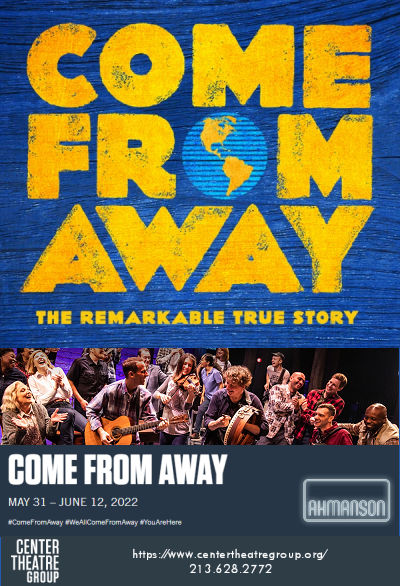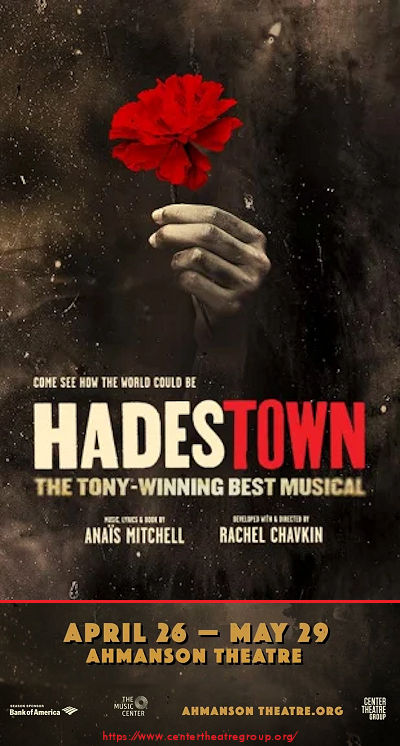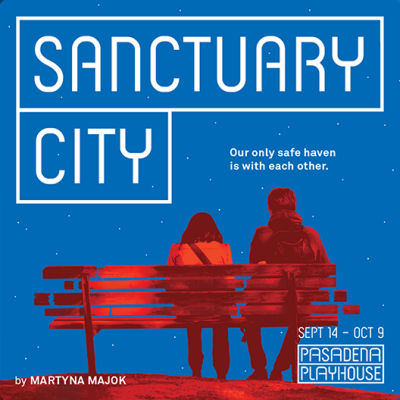
 What does the word “sanctuary” mean to you?
What does the word “sanctuary” mean to you?
Perhaps you come at the word from the religious sense: it is a place with holy relics where you worship. If so, you might think the play Sanctuary City, which we saw last night at the Pasadena Playhouse, is about a city filled with churches, mosques, and synagogues. You would be wrong.
Another meaning of the term refers to a safe space — a space were you are protected and safe from those who might do you harm. Recall from The Hunchback of Notre Dame that Quasimodo seeks sanctuary in the Sanctuary, as a church is viewed as hallowed ground where the clergy will protect you. We often see religious institutions treated in this manner: those who reside there are protected by a higher power.
More recently — and especially during the Trump administration — the notion of a “Sanctuary City” arose. This was a city where undocumented immigrants were safe. If the police encountered them, they wouldn’t be asked immigration status or reported to ICE. They were safe — for varying values of safe.
People find sanctuary — safe space — in many places. As noted above, some find it in church. Some find it in laws — and law enforcement that officially might not see things. Some find it in relationships: your house is a sanctuary where you are loved and feel safe.
Sanctuary City, by Martyna Majok, directed by Zi Alikhan, explores the notion of sanctuary in many ways (although never in the way the title of the play might lead you to believe). This is a one act play that has two distinct acts (and, in some ways, it really could use that intermission). I should also note that this takes place in 2006, after 9/11, and long before DACA or the other changes that came about during the Obama administration.
During the first half — which takes place in an abstract metal structure that could be the bones of a house, we meet a boy (B) and a girl (G). These two have been friends since they were toddlers, ever since their families brought them across the border in various fashions for a better life in America. G’s mother is now with an abusive guy, and so G finds sanctuary with B — constantly coming over and crashing with him. B’s mother plans to return to Mexico before they catch her, and B can come along or not. She’s fine leaving him in American — and he wants to stay because that’s where his life is. The first act is told in a distinctly non-linear fashion, with flashes between timelines that fill in the details of the story. We do learn, by the end of the first half, that G’s mother has been secretly studying to be naturalized, and has gotten her naturalization papers — and before G turned 18, meaning G was a citizen as well. G comes up with a plan to save B by marrying him, and they prepare for the eventual ICE questioning. G also gets accepted to a university in Boston.
The second half is three years later, and abandons that abstract house for a realistic apartment. Three years in, B and G’s plans are on the rocks, called off by … well, let’s just say there is a reason that B never truly “slept with” G during those earlier years. There is now a love triangle, wherein we meet B’s lover, Henry (a pre-law American). It is within the tensions created by this triangle that the other aspects of sanctuary — safety — come into play. G has come to realize that if she marries B, she isn’t safe if they are ever found out, but there is Henry in the equation. B has to decide between the safety with respect to ICE, vs safety with respect to love. And Henry — who can’t marry B at this time because of the law — is stuck in the middle. How this all resolves is the focus of the second half.
This is a story that drew me in. Initially, it was the question of who these people were, and what was their story. The non-linear flash device used is a novel story telling approach, and you quickly saw the strong friendship and figured out the backstory. You wanted them to become more, yet they never quite did. The second half was fascinating, raising all sort of ethical and legal questions. Some of the situations portrayed in this play are no longer a concern (but then again, may be a concern again, given the current Supreme Court). Some, such as the question about undocumented immigrants and what to do about children who were raised as American (but who aren’t Americans), still remain. It was a really interesting, entertaining, and still relevant play. It makes you think, as you leave the theatre, what makes you truly feel safe — and what are you willing to do and give up to get that safety?
The performances were strong. Ana Nicolle Chavez (G) was believable as the teen dealing with an abusive step parent, seeking sanctuary in the home of her friend. Miles Fower (B) was believable as her friend. The two had strong chemistry together, and you could see them capturing well the tension in the relationship. The third point in the triangle was Kanoa Goo (Henry). He was believable as someone who loved B, and there was a strong tension shown with G who was on the verge of taking B away from him.
Chika Shimizu (Scenic Designer) created an interesting scenic design. The first half was a very abstract metal structure, which combined with Solomon Weisbard (Lighting Designer)‘s lighting allowed the non-linear story telling to occur. The second half was a more conventional design of an interior of an apartment. John Nobori (Sound Design) established the mood and place through appropriate ambient sounds; the actors amplification was sufficient for my currently degraded ears. Jojo Siu (Costume Designer) rounded out the design team.
The remainder of the production team consisted of Amanda Rose Villarreal (Intimacy Coordinator), Brad Enlow (Playhouse Technical Director/Production Supervisor), Brandon Hong Cheng (Stage Manager), and Lydia Runge (Asst. Stage Manager). Casting was by The Telsey Office.
Sanctuary City continues at the Pasadena Playhouse through October 9. Tickets are available through the Pasadena Playhouse box office, and they even have a free ticket initiative for those who cannot afford it. Discount tickets are available through Goldstar, and it also appears there is a GroupOn.
❧
Ob. Disclaimer: I am not a trained theatre (or music) critic; I am, however, a regular theatre and music audience member (modulo the COVID break). I’ve been attending live theatre and concerts in Los Angeles since 1972; I’ve been writing up my thoughts on theatre (and the shows I see) since 2004. I do not have theatre training (I’m a computer security specialist), but have learned a lot about theatre over my many years of attending theatre and talking to talented professionals. I pay for all my tickets unless otherwise noted (or I’ll make a donation to the theatre, in lieu of payment). I am not compensated by anyone for doing these writeups in any way, shape, or form. I currently subscribe at Actors Co-op (FB), 5 Star Theatricals (FB), Broadway in Hollywood (FB), the Ahmanson Theatre (FB), and we have a membership at The Pasadena Playhouse (FB). We were subscribing at the Musical Theatre Guild (FB) prior to COVID; they have not yet resumed productions. We have also been subscribers at the Soraya/VPAC (FB), although we are waiting a year before we pick that up again. Through my theatre attendance I have made friends with cast, crew, and producers, but I do strive to not let those relationships color my writing (with one exception: when writing up children’s production, I focus on the positive — one gains nothing except bad karma by raking a child over the coals). I believe in telling you about the shows I see to help you form your opinion; it is up to you to determine the weight you give my writeups. Note to publicists or producers reading this: here’s my policy on taking comp tickets. Bottom-Line: Only for things of nominal value, like Fringe.
Upcoming Shows:
For right now, we’re pretty much sticking with shows that come as part of our subscriptions or are of interest through our memberships. Looking ahead for the remainder of 2022:, the rest of October will bring Ghosts at the Odyssey Theatre Ensemble, The Addams Family at 5 Star Theatricals (FB), and To Kill a Mockingbird at Broadway in Hollywood (FB). November brings 2:22 – A Ghost Story at the Ahmanson Theatre (FB). Lastly, December will bring Annie at Broadway in Hollywood (FB).
As always, I’m keeping my eyes open for interesting productions mentioned on sites such as Better-Lemons, Footlights, as well as productions I see on Goldstar, On Stage 411 or that are sent to me by publicists or the venues themselves. Want to know how to attend lots of live stuff affordably? Take a look at my post on How to attend Live Theatre on a Budget (although I know it is outdated and need to update it). Want to learn about all the great theatre in Southern California? Read my post on how Los Angeles (and its environs) is the best area for theatre in the Country (again, I need to review this for the post-COVID theatre landscape)!


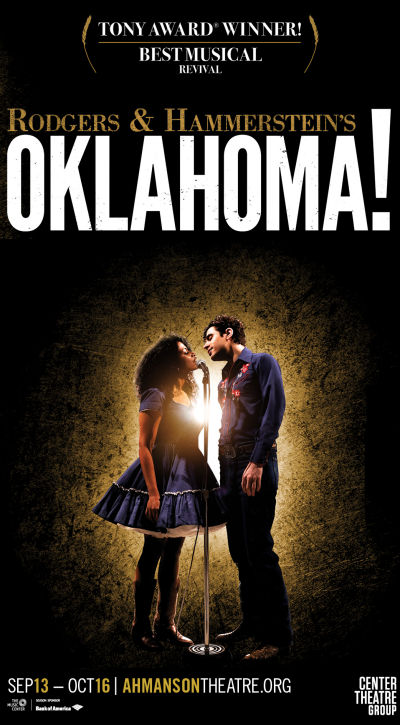
 Memory can be funny thing. When we look back on memories of things we often see just the good. If I was to mention
Memory can be funny thing. When we look back on memories of things we often see just the good. If I was to mention 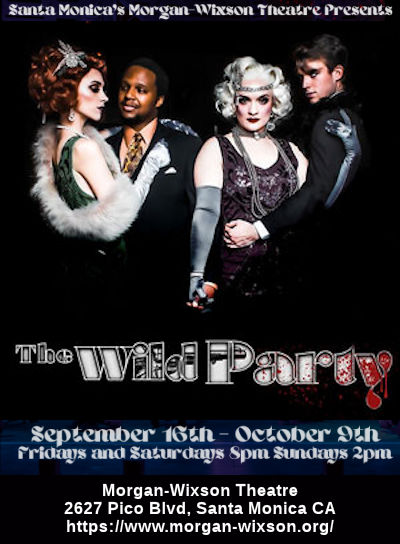
 Boy, this is the weekend for musicals with strong sexual themes, isn’t it.
Boy, this is the weekend for musicals with strong sexual themes, isn’t it.
 Expectations are funny things. Sometimes, someone else expectation can screw up your life. You may be expected to be the perfect mother, the perfect student, the perfect sibling, the perfect minority. The pressure of those expectations can sometimes be overwhelming, and can push you into paths you never expect.
Expectations are funny things. Sometimes, someone else expectation can screw up your life. You may be expected to be the perfect mother, the perfect student, the perfect sibling, the perfect minority. The pressure of those expectations can sometimes be overwhelming, and can push you into paths you never expect. For some reason, this summer I haven’t had the urge or the drive to write my normal full-up theatre reviews. Quite likely, it is burnout from caregiving; whatever the reason, the urge wasn’t there. But we’re entering into the Fall theatre season, and this weekend starts a series of 8 shows in a row. So I need to get the summer shows out of the way. So here are some quick takes, and I’m probably not going to go through and do the heavy linking thing (unless I go back and do it).
For some reason, this summer I haven’t had the urge or the drive to write my normal full-up theatre reviews. Quite likely, it is burnout from caregiving; whatever the reason, the urge wasn’t there. But we’re entering into the Fall theatre season, and this weekend starts a series of 8 shows in a row. So I need to get the summer shows out of the way. So here are some quick takes, and I’m probably not going to go through and do the heavy linking thing (unless I go back and do it). The first show we saw in August was
The first show we saw in August was  The second show we saw in August was If I Forget at the Fountain Theatre. This show, alas, succumbed to a common trend these days: A single page information sheet with
The second show we saw in August was If I Forget at the Fountain Theatre. This show, alas, succumbed to a common trend these days: A single page information sheet with 
